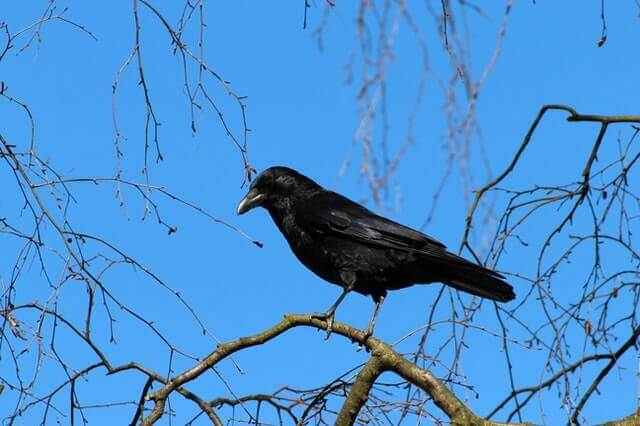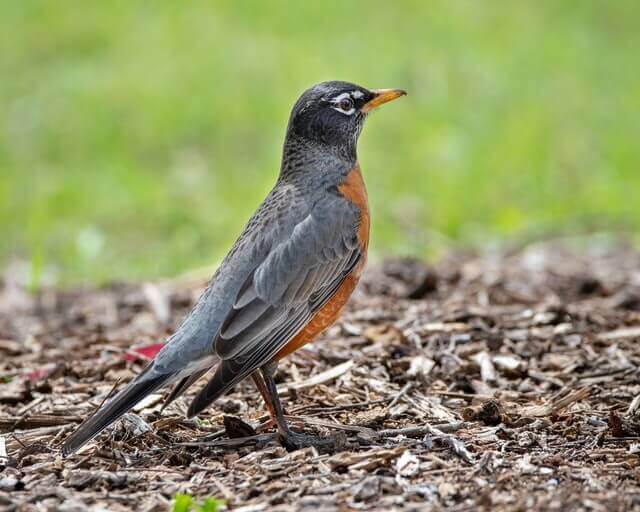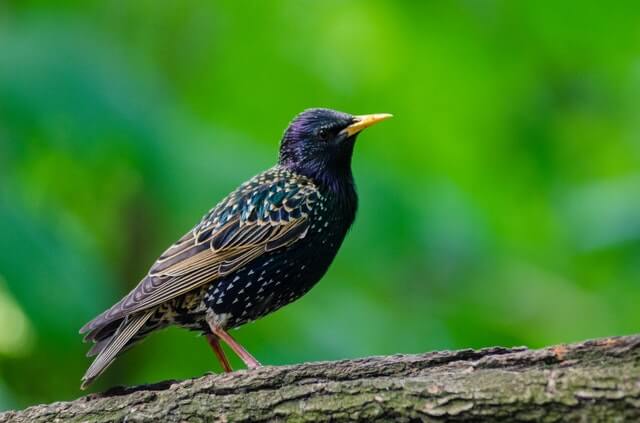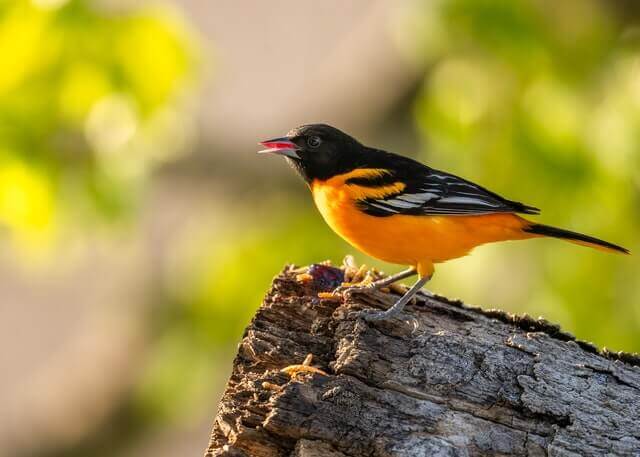Grasshoppers live all over the world and have become an annoyance to many homeowners, this is because they like to chew and destroy plants and crops. One way to reduce the grasshopper population is to attract insect eating birds to your yard. In this article, we will explore 17 birds that eat grasshoppers with photos, ID & information about them.
Table of Contents
Northern Cardinal

Many people know that cardinals feed on seeds, but what about grasshoppers? Cardinals do eat grasshoppers, and their diet is not limited to just one type of food. Their main sources of sustenance are the seed pods from trees like oaks and hickories. They also enjoy eating insects such as crickets, grasshoppers, beetles and ants. Grasshoppers are an important food source for Cardinals because they provide proteins that allow birds to grow quickly.
Related Posts:
- Cardinal Bird Facts You Never Knew
- 10 Best Bird Feeders for Cardinals
- Best Birdhouse for Cardinals 2022 (Tested And Rated)
Blue Jay

The Blue Jays are often seen eating grasshoppers. It is not uncommon to see a Blue Jay in the summer looking for insects on the ground. There are many reasons why they eat them, but one of the main reasons is because they are an excellent source of protein and fat that will help sustain their energy during breeding season when there isn’t much food available.
Related Post :
- How to Attract Blue Jays to your Yard?
- Do Blue Jays Migrate? The Truth
- What do Blue Jay Eat – All The Facts
- 15 Best Bird Feeders for Blue Jays
American Crow
In the United States, there are many species of crows. One of these is the American Crow. These birds can be found in urban areas and rural areas across North America. They eat many types of insects, but they also enjoy eating grasshoppers. Grasshoppers are usually only eaten when there is a drought and other food sources have dried up.
Related Post:
American Robin
The American Robin is a songbird native to North America. In late summer, when food sources become scarce in their breeding grounds, they begin feeding on grasshoppers that live in dry areas where plants can’t grow. This provides a vital source of protein for these birds during this time of year when there are few other foods available.
Related Post:
- Interesting American Robin Fun Facts
- Birds That Look Like Robins But Aren’t
- How to Attract Robins to your yard
Meadowlarks
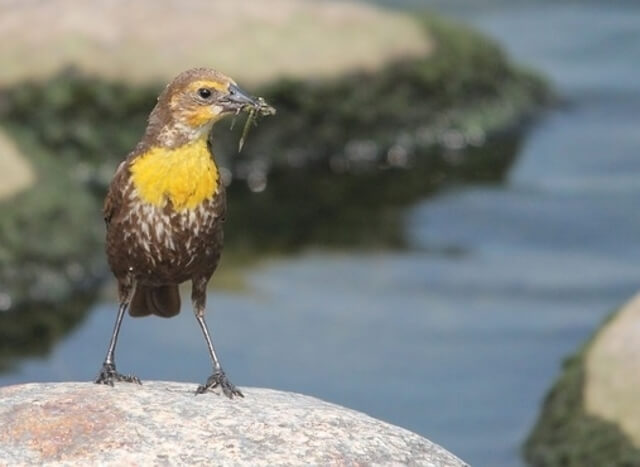
Meadowlarks love to eat grasshoppers. Grasshoppers are abundant in summer and fall, which means that the meadowlark has plenty of food during those seasons. But as winter approaches, meadowlarks need to store up energy for their migration south and preparing for the cold months ahead. To do this, they spend a lot of time feeding on high-calorie insects like grasshoppers and other bugs!
Sparrows

Sparrows love to feast on these insects, but why? The answer is simple: for protein. Sparrows feed on grasshoppers to meet their need for protein because they cannot rely solely on seeds as food. Grasshoppers provide sparrows with an abundant source of amino acids that helps them grow feathers and produce eggs or sperm.
Related Post:
Bluebirds

Bluebirds are known for eating insects. One of their favorite foods is grasshoppers. If you have a problem with pesky grasshoppers, consider putting up bluebird houses to attract these helpful birds. These small songbirds eat various types of insects, including many garden pests such as caterpillars and grubs (although they also eat plenty of other things too).
Related Posts:
European Starling
Starlings are a type of bird that enjoy eating grasshoppers. They feed on insects and have been known to eat other types of bugs as well. The birds fly from branch to branch, seeking out prey in the trees or grasses below them. Starlings will often pluck up the bugs with their beaks and fly off with them before swallowing them whole.
Related Post: How to Attract European Starlings to your yard?
Great-crested Flycatcher
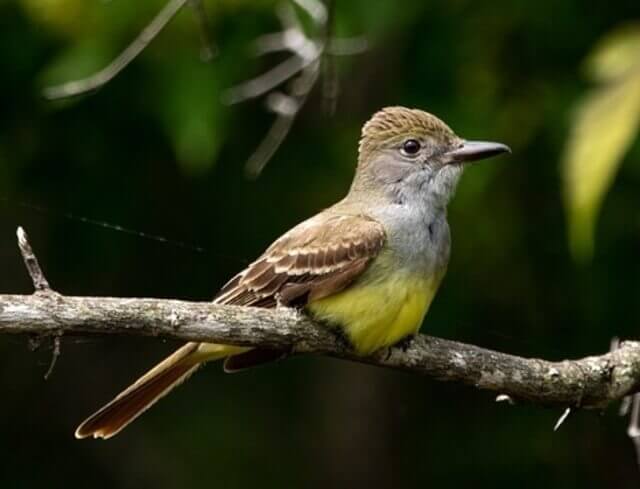
Great-crested Flycatchers are the second-largest flycatcher in North America. They can be found in almost every state east of the Rocky Mountains, except for Florida and New England. These birds have a broad diet that includes small mammals, other birds, insects, reptiles and amphibians. But what they love to eat most is grasshoppers! Grasshoppers make up about 5% of their diet each year.
Orioles
Orioles are omnivores, which means they eat both plants and animals. One type of animal that orioles eat is grasshoppers. Orioles will find these insects by watching for them in the tall grasses where they hide. They may also use their long beaks to probe for them in tree bark or under rocks on the ground. Orioles like to take large prey items back to their nests to feed nestlings (young birds).
Related Post:
Gray Catbird
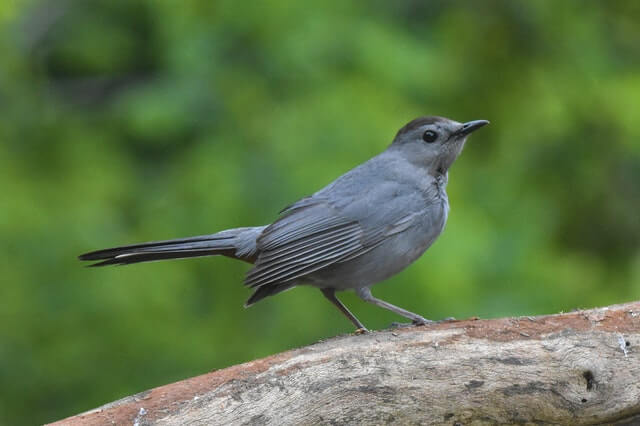
The Gray Catbird is a medium-sized songbird found throughout eastern United States and southern Canada. This bird prefers to eat grasshoppers, which are plentiful in early summer. The Gray Catbirds live mostly on insects during the spring and summer months, but will also eat berries or other fruit as well as small seeds from winter’s crop of weeds and leaves from trees.
Barn Swallow
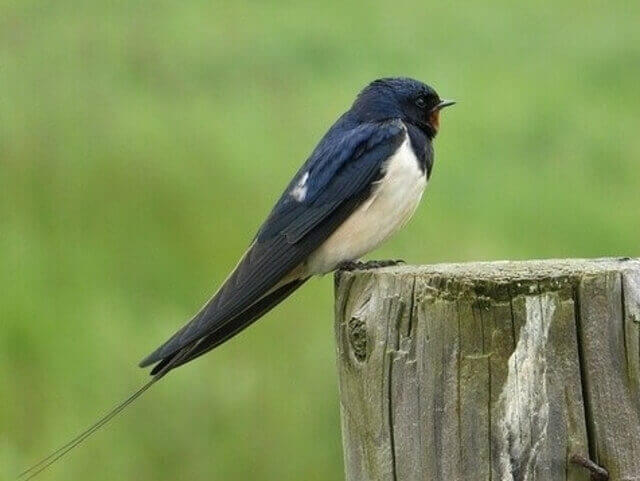
Grasshoppers are a big part of the barn swallow’s diet. In the spring, they feed on them as their primary food source, but as summer approaches and grasshopper populations dwindle, these birds turn to other insects such as crickets and dragonflies. Barn swallows can be found in many areas across North America, from Alaska to Canada’s southern border with Mexico. They nest under bridges or near human-made structures like barns.
Related Post: How to Attract Swallows to your yard?
Warblers
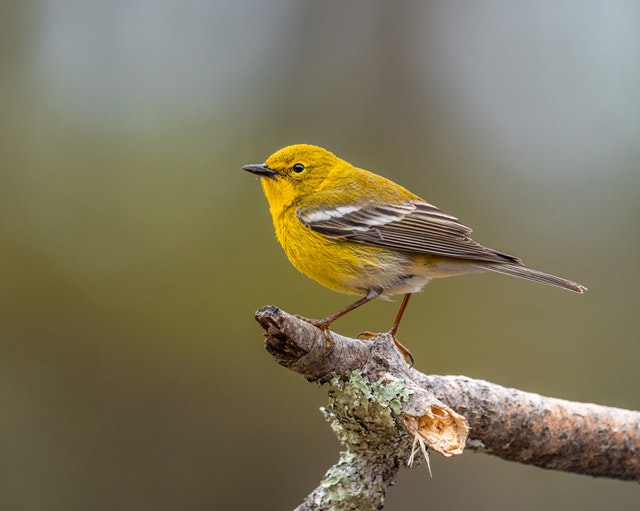
Warblers are small songbirds that have many species, that live throughout North America. Warblers are insectivorous and eat insects to survive. One way warblers find food is by eating grasshoppers, which they glean from vegetation. Many birds feed on insects in order to survive, but this is one of the most common ways for warblers to eat their prey.
Related Post: How to Attract Warblers to your yard?
Carolina Wren
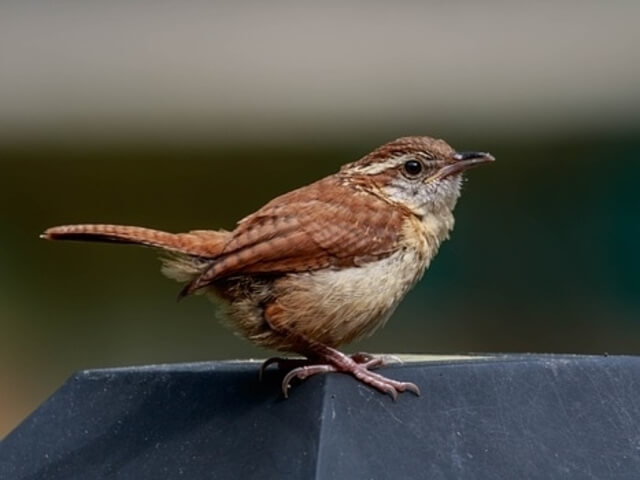
The Carolina Wren is a common bird found in North America. It’s a member of the wren family and can be found in many habitats including grasslands, marshes, scrubland, woods, and urban areas. The Carolina Wren eats various insects such as caterpillars and ants, but it also has been known to eat grasshoppers.
Related Post: How to Attract Wrens to your backyard?
House Wren
House wrens are small, drab brown birds with a cheery song. House wrens are often found in gardens and yards throughout the United States, Canada, and Mexico. These little birds forage on insects like grasshoppers, which they use to feed their young. Grasshoppers also provide an excellent source of protein for these little birds.
Blackbirds
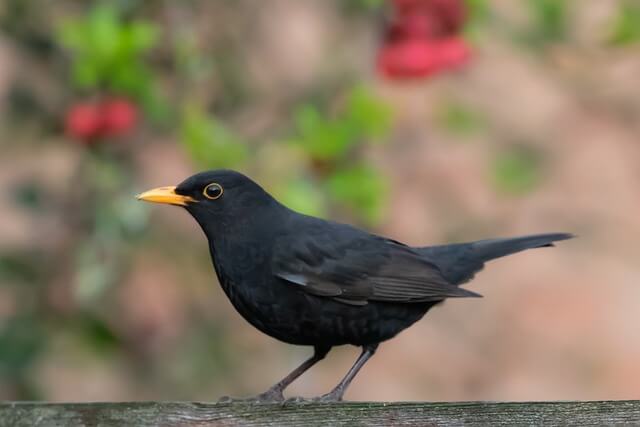
Blackbirds feast on grasshoppers and other insects during the summer months. The blackbird is a native species to North America that eats bugs as well as other invertebrates such as worms, snails, and slugs. Grasshoppers are often hunted by these birds because they provide good nourishment for their diet.
Brown-headed Cowbird
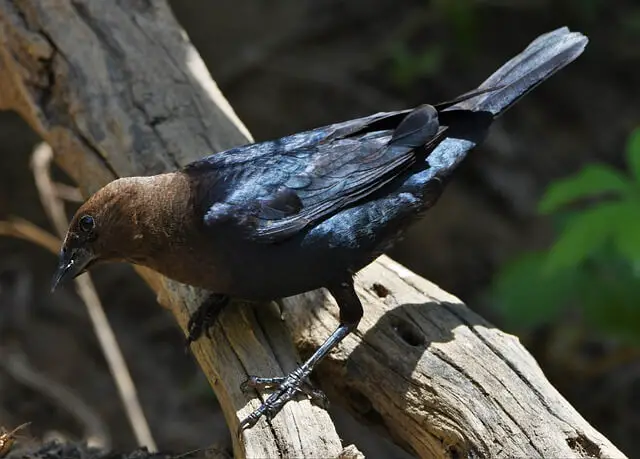
The Brown-headed Cowbird is a native to North America and can be found in areas such as Canada, the United States, Mexico, Central America and South America. Brown-headed Cowbirds are voracious eaters and as such, they do not discriminate when it comes to their food. They feast on grasshoppers, crickets, beetles, spiders and anything else that they can find in the habitat.
Related Post: 12 Birds That Eat Other Birds Eggs
Frequently Asked Questions
Do finches eat grasshoppers?
Finches are generally thought to eat seeds and other plant material, but in fact they do occasionally consume insects such as grasshoppers. These insects are an important component to their diets in some cases, such as when food sources become scarce or during periods where there are high numbers of these bugs.
Why do birds eat grasshoppers?
Grasshoppers can be a great source of food for birds because they contain lots of protein which is what the bird needs to grow feathers and stay healthy. In order to get this food from the grasshopper, the bird has to break open its exoskeleton with their sharp beak so it can reach all the delicious gooey stuff.
Do woodpeckers eat grasshoppers?
Woodpeckers will usually feed on smaller insects such as ants or flies, but it is not uncommon for them to also devour grasshoppers and crickets. There are even instances where woodpeckers have been spotted eating bees!
Do owls eat grasshoppers?
Grasshoppers are a type of insect that owls can eat. Owls hunt at night and typically do not eat during the day, but if they find a tasty grasshopper or other insect to feast on, they will have no problem taking it down.
Do hawks eat grasshoppers?
Hawks eat any type of insect they can find and catch, including grasshoppers. Grasshoppers are considered a staple in the diet of many different types of hawks and other raptors, but the most common hawk to prey on them is the Northern Harrier.


